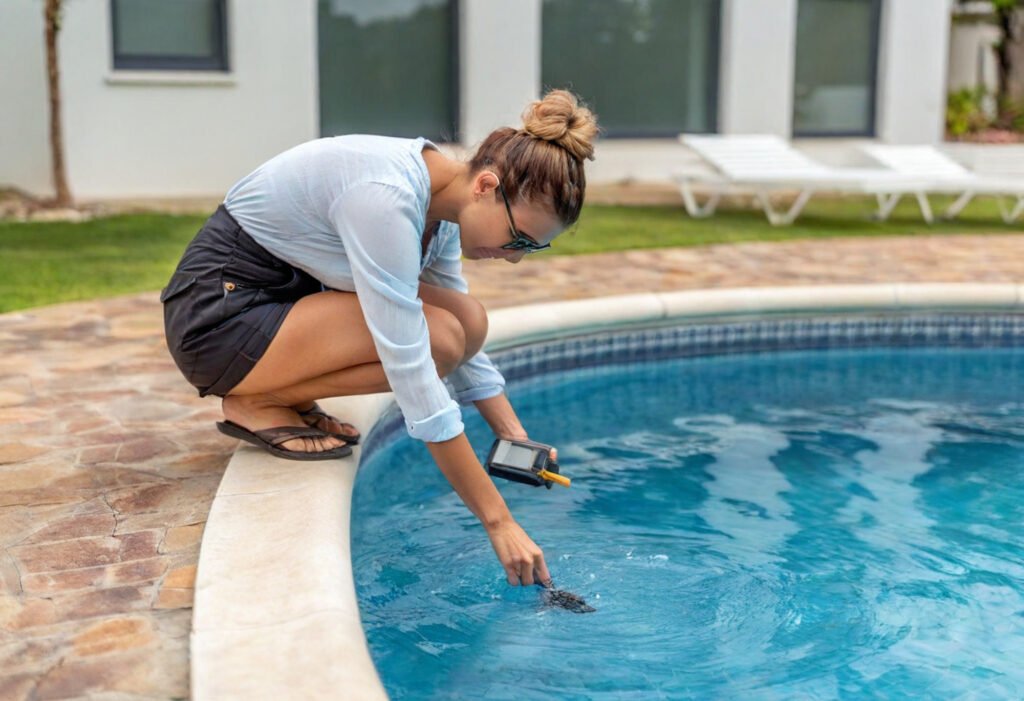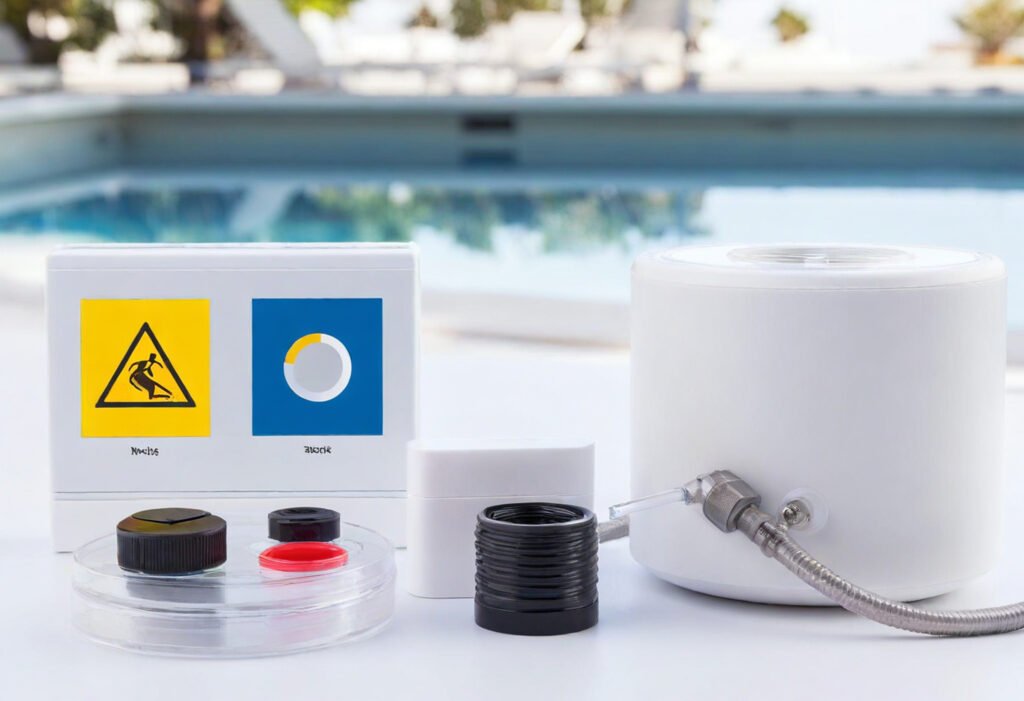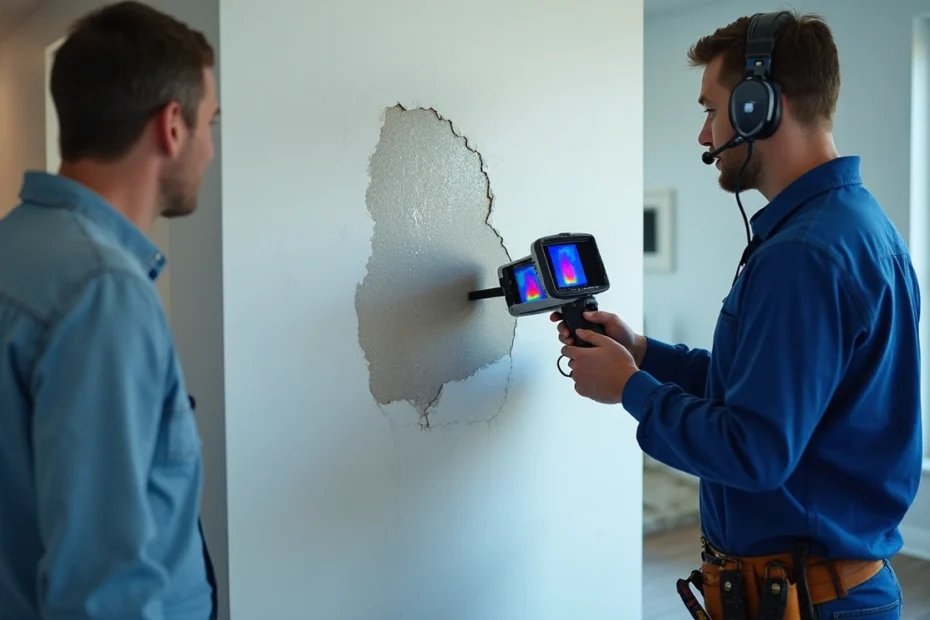The United States loses about 2 trillion gallons of treated drinking water yearly from water main breaks. This makes water leak detection a vital part of infrastructure maintenance. These hidden leaks cause damage long before anyone finds them.
Water leaks create severe structural damage, and repairs get pricey if no one fixes them quickly. The old way of finding leaks relies on guesswork and destructive inspections. Property damage often happens before anyone spots the actual source. Modern leak detection has changed all that. New tools like acoustic detection systems, infrared thermography, and smart water leak detectors find problems with amazing accuracy. These advanced methods need fewer people and less money to run. They are economical solutions that work great for homes and businesses.
This piece will help you find which leak detection system works best for pipelines based on expert testing. You’ll learn how the old methods stack up against advanced leak detection technologies. We’ll help you pick the quickest way to find leaks that matches your needs.
Traditional Leak Detection Methods
Leak detection methods haven’t changed much over the last several decades. Some of these techniques date back more than 80 years. These basic approaches still serve as the industry’s foundation, but they come with substantial drawbacks in accuracy and speed.
Visual inspections and their limitations
Most leak detection starts with a visual inspection. This basic approach requires checking obvious signs like water stains, peeling paint, mold, or damp patches on walls, ceilings, and floors. The method is affordable and straightforward, but it has major drawbacks. Technicians can only spot leaks that show visible damage. Hidden leaks behind walls, under floors, or underground often remain undetected until they cause major structural issues. The damage usually exists long before anyone sees these signs, which leads to expensive repairs.
Pressure testing: how it works and where it fails
Technicians seal the plumbing system and increase pressure using water or air to test for leaks. They monitor this pressure over time, and a drop shows there’s a leak. The test confirms a leak exists, but doesn’t show exactly where to find it. Finding the source takes more work, which often damages walls and wastes time. The method also can’t separate small leaks from big ones, so repair teams struggle to set priorities.
Listening devices: accuracy vs. experience
Acoustic detection remains one of the most common traditional methods. Technicians walk along pipeline routes with sensitive microphones and sound equipment to hear the rushing or hissing sounds of water leaks. Water sounds can travel up to 1,000 linear feet in metal pipes, but only about 100 feet in PVC pipes.
All the same, listening devices work only as well as the technician’s skill level. Small leaks or noisy environments make detection tough. The equipment doesn’t work as well on non-metallic pipes because they don’t carry sound efficiently. The biggest problem lies in the time it takes. Checking an entire underground system can take years, which means the results might be outdated before the job ends.
Modern Leak Detection Technologies

Water leak detection technologies have transformed dramatically. They now provide unmatched accuracy and are the quickest way to detect leaks compared to older methods. These state-of-the-art solutions address limitations of traditional approaches and deliver more reliable results.
Acoustic leak detection: pinpointing sound frequencies
Acoustic leak detection has evolved beyond simple listening devices. Modern systems detect specific sound frequencies that occur when water escapes from pressurized pipes. Advanced algorithms filter out background noise and locate leaks with remarkable precision. These acoustic methods identify leaks as small as 0.1mm in diameter and find them within a 3-foot circular area.
Infrared thermography: detecting hidden moisture
Thermal imaging cameras help identify subtle temperature differences from water leaks through infrared thermography. This technology spots moisture in walls without causing damage by capturing patterns that show water presence. The method works best, especially when you have leaks in walls (showing a top-down triangular shape), ceilings (displaying amorphous patterns), and flooding situations.
Ultrasonic detection: high-frequency precision
Specialized sensors in ultrasonic leak detection identify high-frequency sounds from leaks. This approach detects sound emissions even in noisy industrial environments, making it perfect for commercial use. Companies using ultrasonic leak detection in compressed air systems see an average energy saving of 35%.
Smart water leak detectors: real-time alerts
Puck-sized smart water leak detectors placed near leak-prone equipment monitor potential issues. These sensors trigger alarms and send smartphone alerts immediately when they contact with water. The systems can watch multiple areas at once, and some models track up to 100 sensors simultaneously.
Tracer gas detection: underground and hard-to-reach areas
Tracer gas detection provides a non-destructive solution for challenging leak spots. Technicians introduce gases like hydrogen/nitrogen mixtures into pipe systems. Hydrogen rises straight up from leaks to the surface because it’s lighter than air. Sensitive detectors then pinpoint the exact location. This method excels in underground lines where other approaches don’t deal very well with accuracy.
Expert Testing: Which Methods Performed Best?
Tests by experts show major differences in how well various leak detection methods work. The choice of technology makes a big difference in accuracy, affordability, and usefulness in different settings.
Criteria used in expert evaluations
Experts look at several key factors to review leak detection systems. Quick response time is crucial because it helps prevent water damage that can get pricey. Tests measured how quickly sensors could detect leaks within seconds after contact with water. The review also checked for features like multiple alerts (push notifications, email, phone), notifications during power outages, and alarm sound levels from 6 feet away. The systems needed to work well on uneven surfaces like basement floors. Smart home platform compatibility was another key factor in the testing.
Top-performing methods in residential settings
Thermal imaging cameras lead the pack in homes. These cameras spot small temperature changes from hidden moisture without damaging walls. The infrared systems find leaks behind walls and under floors easily. Smart leak detectors with live alerts also did well in home testing. The best ones offered several ways to alert homeowners and included battery backup. Acoustic leak detection proved reliable in homes and could find leaks within 3-4 feet, just what you need for good repairs.
Best options for commercial and industrial use
Alert Labs and similar complete systems work best for commercial properties. One business customer avoided $6 million in damage thanks to this system. Commercial systems often use cellular networks instead of Wi-Fi. This ensures monitoring continues even when the power goes out. Industrial sites get the best results from tracer gas detection, especially for underground and hard-to-reach spots. Large commercial properties benefit from LoRaWAN network sensors because they can communicate over long distances.
Accuracy vs. cost: what the data shows
Data from experts confirms that non-invasive techniques offer better value despite higher upfront costs. Thermal imaging and acoustic systems give you the best balance of accuracy and cost in most cases. Professional services that use advanced tech like thermal imaging and acoustic detection help property owners save money on repairs and prevent additional damage.
Choosing the Right Leak Detection Method for You

The right water leak detection method depends on your specific situation. Let me help you choose the quickest way that works for your needs.
Traditional methods still make sense
Traditional leak detection methods remain practical in many cases. Visual inspections can work well for properties that show moisture signs or recent construction. Manual approaches might serve as your starting point if you have a tight budget and know how to spot common leak indicators. Pressure testing proves useful with newly installed plumbing before finishing walls and floors. These conventional techniques provide value during the original assessments and help confirm suspected leak areas.
Best modern method for small homes
Smart water leak detectors give small residential properties the perfect mix of effectiveness and affordability. You can place these puck-sized devices near risk-prone areas like water heaters, dishwashers, and under sinks to get immediate alerts about leaks. Most models send notifications straight to your smartphone, so you can act quickly even away from home. Systems with multiple sensors deliver detailed coverage without expensive installation costs or permanent changes to your plumbing.
Recommended systems for large properties
Integrated solutions work best for large properties. Commercial-grade systems with centralized monitoring dashboards let property managers watch multiple buildings from one user-friendly interface. Industry data shows these detailed systems have prevented up to $6 million in damage for single business customers. Advanced detection becomes even more vital for properties in cold northern climates where pipes freeze more often. Water leaks account for nearly 45% of commercial property insurance claims in these regions.
Cost, speed, and invasiveness matter
These key factors need to be balanced:
- Original investment vs. long-term savings: Smart systems need upfront costs ($50-$500), but substantially reduce potential damage expenses
- Response time: Systems with automatic water supply shutoff give maximum protection
- Installation complexity: Non-invasive methods like acoustic detection and thermal imaging avoid extra property disruption
Match the solution to your property’s specific risk profile and characteristics.
Conclusion
Picking the right water leak detection method can save property owners time, money, and stress. Traditional techniques still serve specific purposes despite their limitations. Modern technologies, all the same, give remarkable advantages in accuracy, efficiency, and non-invasiveness.
Smart leak detectors give homeowners with small properties instant alerts and peace of mind at a fair price. Large commercial properties get the most value from integrated systems with centralized monitoring. These systems have saved millions in potential damage. Professional services that use thermal imaging or acoustic detection technology provide the best mix of accuracy and affordable solutions for most needs.
Numbers tell the real story. Non-invasive detection methods need more money upfront, but end up being more economical. They prevent extensive damage and repairs that can get pricey. Our research shows that response time is the key factor in reducing water damage, whatever system you pick.
Your specific situation, budget limits, and property features will determine the best leak detection method for you. You might choose simple smart sensors or get a full picture from professionals. Taking action now to detect leaks will protect your property from one of its biggest threats. Don’t wait for visible damage to show up. Put an appropriate detection system in place now – you’ll be glad you did later.

good info!